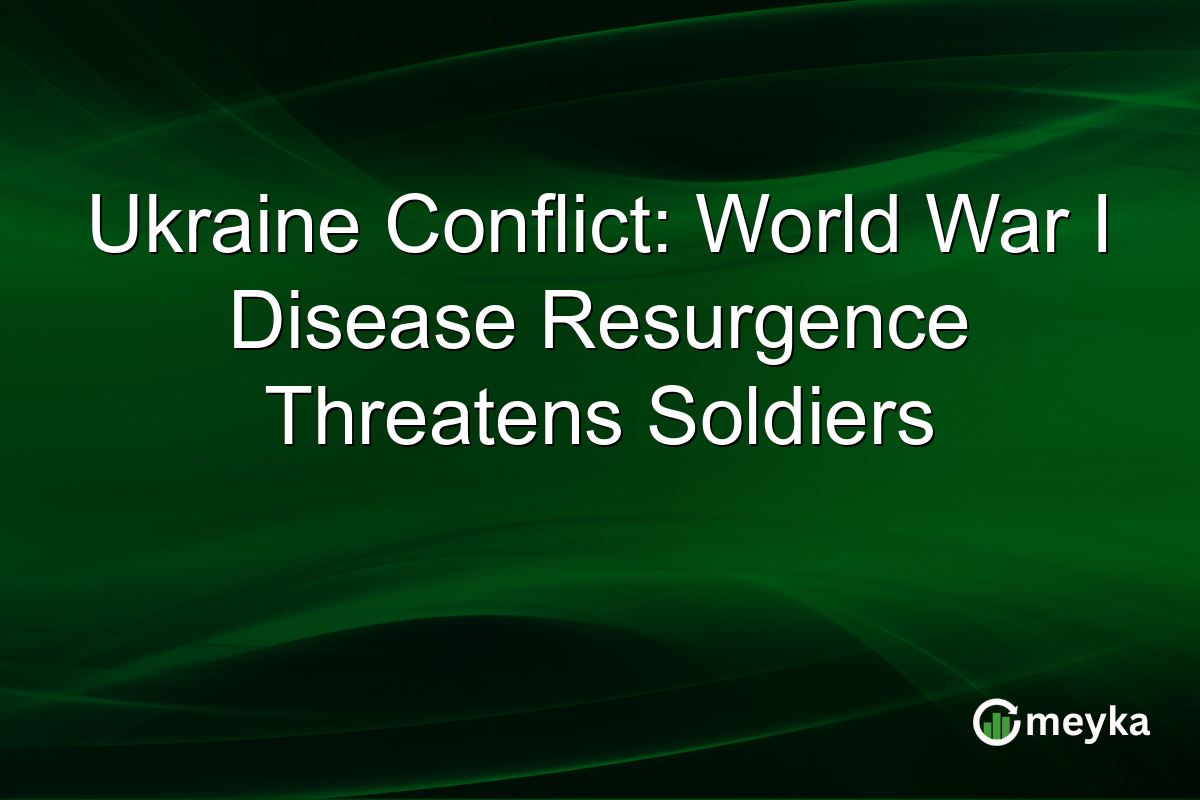Ukraine Conflict: World War I Disease Resurgence Threatens Soldiers
In the midst of the ongoing Ukraine conflict, a troubling health crisis has emerged with the resurgence of gas gangrene, a disease largely unseen in Europe since World War I. The harsh conditions and injuries soldiers face on the battlefield are perfect breeding grounds for this dangerous bacterial infection. Immediate attention and strategic medical responses are needed to combat its spread and mitigate the impact on soldiers’ health.
Gas Gangrene: The Silent Menace
Gas gangrene, historically associated with World War I, is caused by bacteria that thrives in deep wounds. The lack of oxygen in these injuries fosters the growth of Clostridium bacteria, leading to potentially lethal outcomes. In Ukraine, battle injuries and limited medical evacuation have contributed to a noticeable increase in cases. Experts warn that without swift action, the disease could escalate further, imposing severe challenges on military and medical personnel. This resurgence underscores the critical need for improved battlefield medical strategies tailored to modern warfare conditions.
Challenges of Timely Medical Evacuation
One significant obstacle in addressing the Ukraine conflict health crisis is the difficulty in rapid medical evacuation. The use of drones in warfare has complicated efforts to promptly airlift injured soldiers to medical facilities. Reports suggest that drone attacks not only pose direct threats but also delay crucial medical interventions Full report on Welt. This problem highlights the need for developing resilient medical evacuation protocols that can function under such conditions, potentially saving lives and preventing widespread health crises.
Medical and Strategic Implications
The resurgence of WWI disease like gas gangrene in Ukraine necessitates a multi-layered response involving both medical intervention and strategic military planning. On the medical front, international support and expertise are crucial in enhancing treatment facilities and preventive measures. Strategically, enhancing protective equipment and protocols can reduce the incidence of injuries conducive to the disease. Furthermore, comprehensive training on recognizing and managing gas gangrene early can vastly improve outcomes for affected soldiers.
Final Thoughts
The resurgence of gas gangrene amidst the Ukraine conflict mirrors a significant health crisis requiring immediate action. As battle conditions facilitate the spread of this deadly disease, it is imperative to prioritize the development of robust medical evacuation procedures and strengthen healthcare infrastructure in conflict zones. These steps are essential not just for the wellbeing of soldiers but also for maintaining operational efficacy. By addressing these challenges through coordinated global and local efforts, we can mitigate the impact of this WWI disease resurgence and safeguard military health.
FAQs
Gas gangrene is a severe bacterial infection that occurs in wounds, especially deep ones devoid of oxygen. It’s caused by Clostridium bacteria and can result in tissue death, systemic toxicity, and high fatality rates if not promptly treated.
The harsh and injury-prone conditions on the battlefield create ideal circumstances for gas gangrene by facilitating the entry of the bacteria into deep wounds. Limited medical evacuation due to enemy drone interference further exacerbates the spread of the disease.
To combat gas gangrene, it is crucial to implement advanced wound care procedures, ensure rapid medical evacuation, and maintain robust supply chains for necessary medical supplies. Additionally, educating military personnel about early detection and immediate response is vital.
Disclaimer:
The content shared by Meyka AI PTY LTD is solely for research and informational purposes. Meyka is not a financial advisory service, and the information provided should not be considered investment or trading advice.






